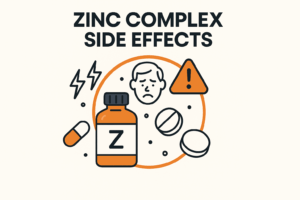Intravenous IV therapy is a cornerstone of modern medicine that touches nearly every aspect of patient care. But what exactly is an intravenous infusion? In essence, it’s a method healthcare professionals use to deliver fluids, nutrients, or medications directly into a patient’s bloodstream.
This technique bypasses the digestive system and allows for immediate absorption and effects. From emergency rooms to outpatient clinics, IVs have become an indispensable tool in combating illness and facilitating recovery [1].
To further define IV infusion and intravenous infusion therapy in this article, we’ll discuss the different ways these treatments are utilized in healthcare settings and why they have become a staple of modern medicine.
By understanding their function, you can better appreciate how such therapies contribute to patient well-being and recovery. Let’s begin.
Primary Applications of Intravenous Therapy
Intravenous therapy, due to its direct and immediate effect on the body, serves multiple purposes across various medical scenarios. This section will illustrate the main purposes of IV infusion and its applications as a critical healthcare tool.
When Oral Intake Isn’t an Option
The primary purpose of IV infusion is to deliver essential substances directly into a patient’s bloodstream. Therefore, when oral intake isn’t possible or efficient enough – such as in severe dehydration cases or when fast medication action is required – an intravenous route becomes indispensable.
Delivering Medications
One significant application of intravenous therapy involves administering medications. Many drugs are more effective when delivered directly into the bloodstream, bypassing the digestive system and thereby ensuring rapid onset of action [2]. This method is particularly beneficial for critically ill patients who need immediate relief or treatment.
Restoring Fluid Balance
Another essential purpose of IV therapy is to restore fluid balance in the body. Patients with conditions that lead to severe vomiting, diarrhea, or excessive sweating can become dangerously dehydrated. In such scenarios, intravenous infusion of fluids helps replenish lost electrolytes and maintain proper hydration levels swiftly [3].
Providing Nutrition
In cases where a patient cannot ingest food orally due to surgery or a medical condition, IV therapy serves the purpose of providing nutrition. A special type of IV therapy, known as total parenteral nutrition (TPN), delivers a mix of nutrients such as glucose, amino acids, vitamins, and minerals directly into the bloodstream [4].
This helps ensure that patients receive the vital nutrients they need for healing and recovery.
Replenishing Blood Volumes
Intravenous therapy is particularly crucial in situations where a patient’s blood volume needs to be rapidly replenished, such as after severe injury or during major surgery. The process typically unfolds as follows [5]:
- Assessment: Healthcare providers first assess the patient’s condition and determine the extent of fluid loss.
- Selection of Fluids: Depending on the situation, appropriate fluids (like crystalloids) are selected for infusion.
- Administration: An IV line is inserted into a vein, and the chosen fluid is administered at a rate decided by medical professionals based on the patient’s specific needs.
- Monitoring: Throughout the infusion, vital signs are closely monitored to ensure the patient is responding well to treatment and that blood volume is being effectively restored.
Thus, IV therapy is critical in managing fluid balance and maintaining adequate blood volumes when faced with medical emergencies.
Overall, intravenous therapy has diverse roles in healthcare settings – from delivering medications to restoring fluid balance and providing necessary nutrition. The good news is that these applications bring about even more benefits to this type of treatment.
Disclaimer: While we define intravenous infusion as a versatile healthcare solution, it’s crucial to remember that every individual’s health situation is unique. That’s why professionals need to consider factors like a patient’s existing medical conditions, medications being taken, and specific nutritional needs, among others. This ensures the safe and effective use of this treatment method tailored according to your personal health circumstances.
The Top Benefits of IV Therapy
IV Therapy, while serving various purposes in healthcare, also offers numerous benefits. Notably, the benefits of IV fluids extend far beyond simple hydration. Here are some top advantages that come with using this method:
- Quicker Absorption Rates: IV therapy directly delivers medications and fluids to the bloodstream, bypassing the digestive system entirely. This results in a significantly quicker absorption rate compared to oral intake, making it particularly beneficial for patients who need immediate symptom relief or rapid fluid replenishment.
- Controlled and Personalized Administration: One key advantage of intravenous infusion is precision and control over dosage amounts. Healthcare providers can accurately adjust the rate and volume of infusion according to individual patient needs.
- Immediate Effects: Given that IV fluids enter directly into the bloodstream, patients often experience immediate therapeutic effects. This is particularly crucial during emergencies when time plays a critical role in patient outcomes.
- Hydration and Electrolyte Balance: Saline solution, one type of commonly used IV fluid, effectively restores hydration levels and balances electrolytes in the body. This makes it extremely useful for conditions like dehydration or heat stroke where rapid recovery is essential.
- Efficient Delivery of Nutrients: For patients unable to consume food orally, specially formulated IV fluids can provide essential nutrients directly into the bloodstream. These nutrient-rich solutions contain elements such as glucose, amino acids, and vitamins vital for recovery and overall health [6].
- Access to Hard-to-Absorb Medications: Some medications are poorly absorbed when taken orally due to various factors like stomach acidity or enzymatic degradation [7]. With intravenous therapy, these drugs can be delivered effectively, ensuring optimal therapeutic benefits.
Intravenous therapy offers a multitude of benefits in diverse medical scenarios – that’s why it’s an indispensable tool in modern healthcare delivery.
Wrapping Up
Overall, intravenous therapy has a critical role, which continues to develop, in modern healthcare. From delivering medications and restoring fluid balance to providing nutrition, the applications of this treatment approach are diverse.
If you have more questions other than “What is intravenous infusion?” or if you want to define intravenous therapy from a more personalized perspective, feel free to reach out to Legere Pharmaceuticals.
Our team of experts is always ready to help you understand how IV therapy might be beneficial for your specific health needs.




